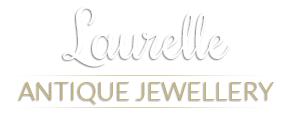A Brief History of Georgian Jewellery
Jewellery described as Georgian is that which was created between the years of 1714 and 1837 and takes its name not from a single monarch, but four who all reigned during those years. Whilst the name of the period derives from the name of four English monarchs, jewellery created during the Georgian Era was influenced to a large extent by French, German, Italian and even Egyptian motifs and fashions.
Metals
Silver was most commonly used during the Georgian period to set gemstones. Meanwhile yellow gold, usually of 18k or more, was most highly prized and used to create some of the pieces that were at the time and are today most sought after and highly prized. Equally though, during the Georgian period less precious metals including steel and iron were commonly used to create jewellery. Lastly, a little known of metal today which was at the time referred to ‘pinchbeck’ and made by combining both zinc and copper was also used.
True examples of Georgian jewellery are today somewhat rare and consequently highly valued as Georgian jewellers very commonly melted down jewellery which was deemed no longer fashionable in order to create new items and pieces. Further, Georgian jewellery pre-dates the advent of hallmarking, which was introduced during the 1900s. Hence, often establishing the actual composition and nature of metals used when inspecting a supposedly Georgian jewellery piece is best done by a professional who will be able to tell by the condition, metal, settings, stones and their cuts as well as the techniques used in creating a specific piece to determine its age.
Motifs and Fashions
Georgian period jewellery was dominated by a variety of motifs. Most notably floral patterns, leaves, foliage and flowers, bows and ribbons and feathers and plumes were common and popular.
The early Georgian period was dominated by pieces which reflected and celebrated the Baroque style and as such championed symmetry and intricate, heavily ornate designs. The result was that metals were cast into patterns and designs that were visually ‘lace-like’, though often large and bold rather than delicate or wistful in appearance.
By 1750, the Rococo style began to emerge and change the look of Georgian jewellery. Hence, jewellery pieces began to be made that, in contrast to earlier Baroque designs, featured asymmetrical designs and designs that were far more open. Consequently, pieces were too were far lighter and more delicate both aesthetically and literally.
During both the Baroque and Rococo vogues, Pompeii was being excavated and as such some of the designs and influences we today most recognise as ‘Georgian’ were established. Namely, Greek and too Roman motifs such as laurels, grape vines and leaves and keys all became very popular. Today we refer to much of the jewellery created around and after 1760 as ‘Neo-classical Georgian’ and pieces from the movement remain some of the most highly prized and sought after.
By 1800 Napoleon had been at war with Egypt and consequently jewellery being made in Britain and Europe began to feature motifs such as pyramids, with grape vines and foliage patterns and motifs being replaced by exotic papyrus leaves.
Gem Stones
Up until 1750 diamonds were used, almost exclusively, to create some of the finest and best loved jewellery. The Georgian era changed that by introducing and making use of a wealth of gems, colour and too using glass overlays, pastes and enamels to great effect. Hence, whilst diamonds were often favourably and continued to be worn in evening pieces, jewellery worn during the day began to be far more colourful with necklaces, rings, bracelets, hair pieces and brooches showcasing arrays of garnets, differently coloured topaz, emeralds and rubies.
Over the course of the Georgian period and because of the popularity of cameos, ivory, pearls, coral and amber were too widely used. Meanwhile, in less extravagant pieces, faux pearls, paste and opaline glass were often used.
To see for yourself some genuine Georgian jewellery, browse the Georgian jewellery range here at Laurelle Antique Jewellery.

